Sui Blockchain’s Blossoming Dapp Ecosystem: 15 Ascending Projects

Today’s digital landscape is turning more towards decentralization and blockchain technology. One such platform gaining traction is the Sui blockchain, a Layer 1 platform making its mark in the Web3 market. So, why should you be interested in Sui?
Blockchain technology is shaping the future, with Sui, the inaugural product from Mysten Labs, playing a significant role. This article aims to familiarize you with Sui, the projects developing in its ecosystem, and why it holds potential in the Web3 space.
Understanding Sui
Sui Blockchain, developed by Mysten Labs, is an emerging blockchain platform that shows immense potential. With its unique features and specific programming language, Sui aims to solve persistent issues around scalability, security, and gas fees.
Their successful Series B funding round, netting a substantial $300 million, attests to the long-term potential of this blockchain platform. But what makes Sui stand out? Let’s explore more about Sui Blockchain, its structure, important features, and its token model.
Sui is a permissionless, PoS-enabled, Layer 1 blockchain crafted to provide immediate settlement, high throughput, and support a wide array of decentralized applications. Its flexibility and low latency allow developers to create Web3 projects that can handle the expected growth in Web3 users.
The Force Behind Sui
Mysten Labs, a Web3 infrastructure company, and their team include former executives from Meta’s Novi Research and experts in cryptography, programming languages, and distributed systems.
Evan Cheng, Mysten’s Co-Founder, and CEO, believes that the current Web3 space is still in its infancy—slow, expensive, insecure, and difficult to build on. Sui was introduced to remove intermediaries and allow users to engage with their chosen products across apps seamlessly.
Noteworthy features of Sui include its MOVE programming language and the Narwhal-Tusk consensus algorithm. MOVE is native to the Sui blockchain and enables parallel execution. In contrast, the Narwhal-Tusk consensus algorithm separates data transmission from transaction consensus, resolving a common issue in traditional blockchain designs.
The Sui Token
SUI is the native coin of the Sui blockchain, with a total supply of ten billion. It has various uses, including staking in PoS consensus, paying for transaction gas fees, and facilitating on-chain investor voting.
Within the Sui Blockchain ecosystem, SUI tokens mainly pay for transaction fees and are staked by validators involved in the transaction consensus process. Any fraudulent actions from validators lead to slashed, staked SUI tokens as a penalty.
Sui focuses on three main components: objects, transactions, and validators. It uses the MOVE programming language to enable the creation of Web3 applications.
With Sui explained, let’s examine the ecosystem that will shape the success of Layer 1 in the near future.
Despite launching its main net recently, Sui supports a growing ecosystem of more than 100 projects, including NFT marketplaces, DeFi dapps, and Oracles.
Let’s delve in!
Note that this list, current as of May 2023, will be updated with emerging projects as the ecosystem evolves.
Sui Bridges
1. OmniBTC: Bridging Cross-Chain Liquidity on Sui Blockchain
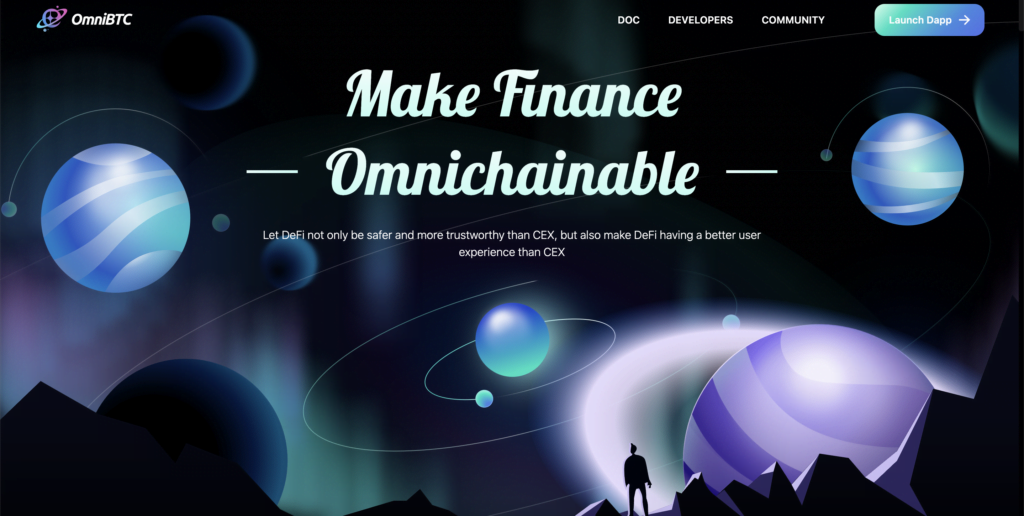
OmniBTC is a beacon project on the Sui Blockchain, showcasing its power as a decentralised cross-chain swap and lending/borrowing platform. It aims to centralise all on-chain liquidity, facilitating seamless, low-cost cross-chain transactions.
OmniBTC is bringing power to Sui with key features like Sui-DEX-Aggregation (which minimizes transaction slippage and costs), one-click cross-chain swaps across multiple VM ecosystems, and the ability to deposit assets on one chain and borrow on Sui.
The project addresses a crucial need in the Sui ecosystem: a robust cross-chain financial application. With OmniBTC, users can seamlessly bridge large funds from other public chains to Sui, deposit assets securely for increased capital utilization, and enjoy deep liquidity pools for large transactions. OmniBTC is a prime example of Sui’s potential in hosting next-gen decentralized applications.For more updates on OmniBTC, check out their Twitter page,
2. Celer cBridge: A Decentralized Asset Bridge Facilitating Cross-Chain Transactions
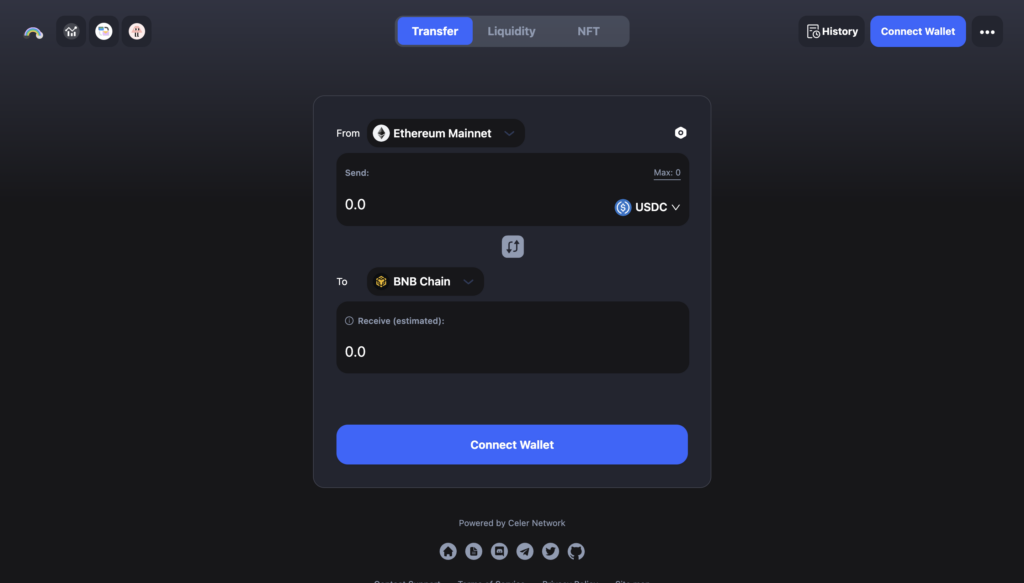
Celer cBridge is a decentralized, non-custodial asset bridge supporting over 150 tokens across over 40 blockchains and layer-2 rollups. It has processed nearly $13 billion in cross-chain transactions, serving over 350,000 unique users.
Celer cBridge is a key part of Celer’s blockchain interoperability protocol. It enables seamless access to tokens, DeFi, GameFi, NFTs, governance, and more across multiple chains, all with a simple one-click user experience. Developers can utilize the Celer Inter-chain Message SDK to build inter-chain-native dApps, while users can enjoy the benefits of a diverse multi-blockchain ecosystem through a single chain.
For more updates on Celer, check out their Twitter page..
DeFi on Sui
3. Umi: The Premier DEX Aggregator on Sui Blockchain
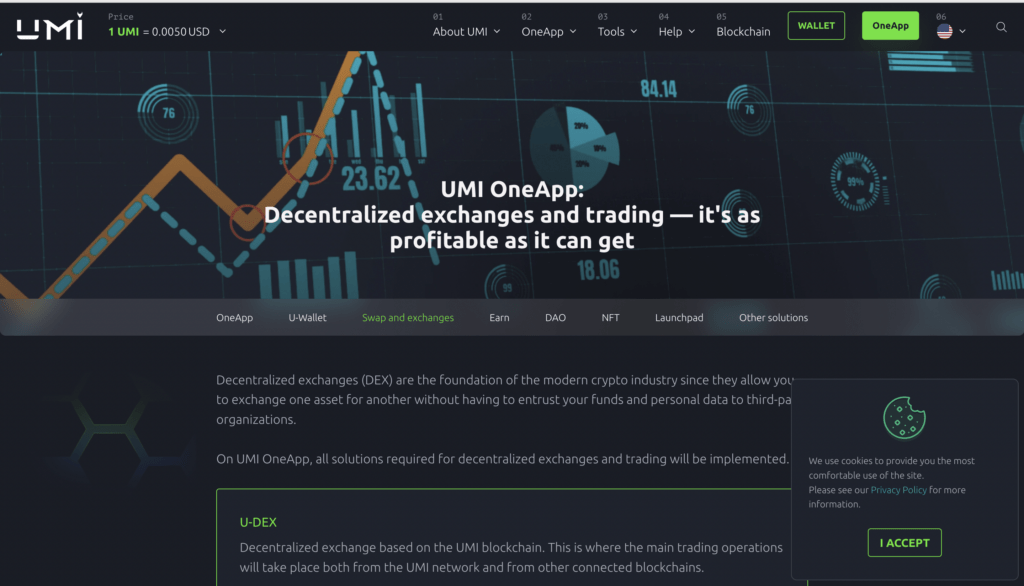
Umi is Sui’s first decentralized exchange (DEX) aggregator aiming to provide traders with the optimal swap route at the most favorable exchange rates by amalgamating multiple Automated Market Makers (AMMs), order books, and other liquidity protocols.
For more updates on Umi, check out their Twitter page.
Umi incorporates a graph search algorithm to identify the best swap route and offers a rapid, reliable API for smooth and quick trading. One of its standout features is the ability to swap any coins, increasing its versatility and utility.
Umi also provides a Software Development Kit (SDK) for developers. By integrating with the Umi aggregator, DEX and wallet developers can expand their reach to a broader customer base. Furthermore, Umi’s API allows professional traders to utilize a fast quote API, significantly improving trading efficiency.
4. Cetus: The Pioneer DEX and Concentrated Liquidity Protocol on Sui Blockchain
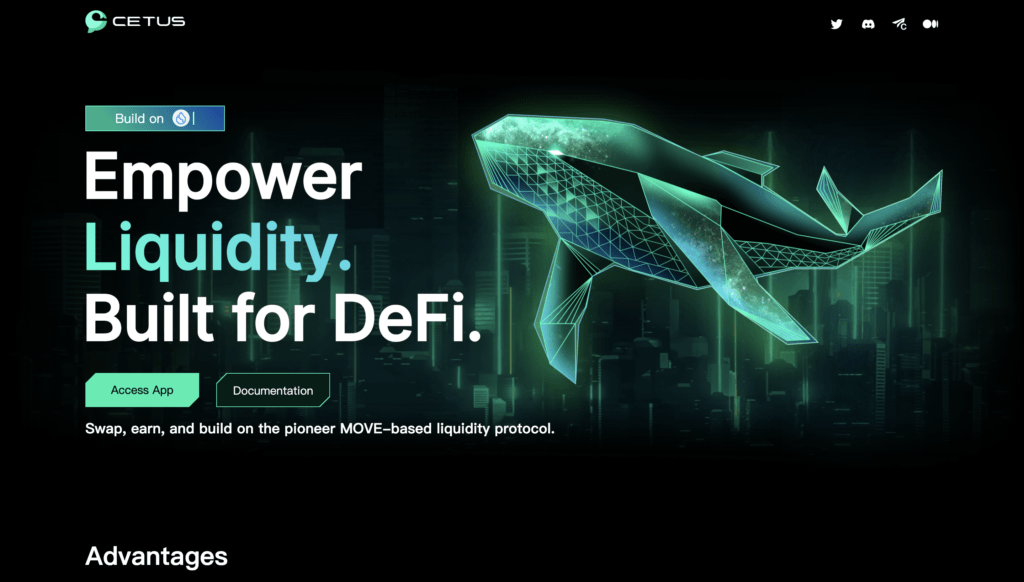
Cetus is a groundbreaking Decentralized Exchange (DEX) and concentrated liquidity protocol built on the Sui Blockchain, serving as a vital part of the ecosystem infrastructure. It caters to the diverse needs of traders, liquidity providers, developers, and derivative products, all driven by the burgeoning DeFi user base.
Cetus specifically focuses on the Move ecosystem aiming to establish a robust and flexible underlying liquidity network to simplify trading for all users and assets. Its primary goal is to provide the best trading experience and superior liquidity efficiency to DeFi users through developing its concentrated liquidity protocol and a series of interoperable functional modules.
For more updates on Cetus, check out their Twitter page.
5. MovEX: The First AMM+ Order Book DEX with Hybrid Liquidity on Sui
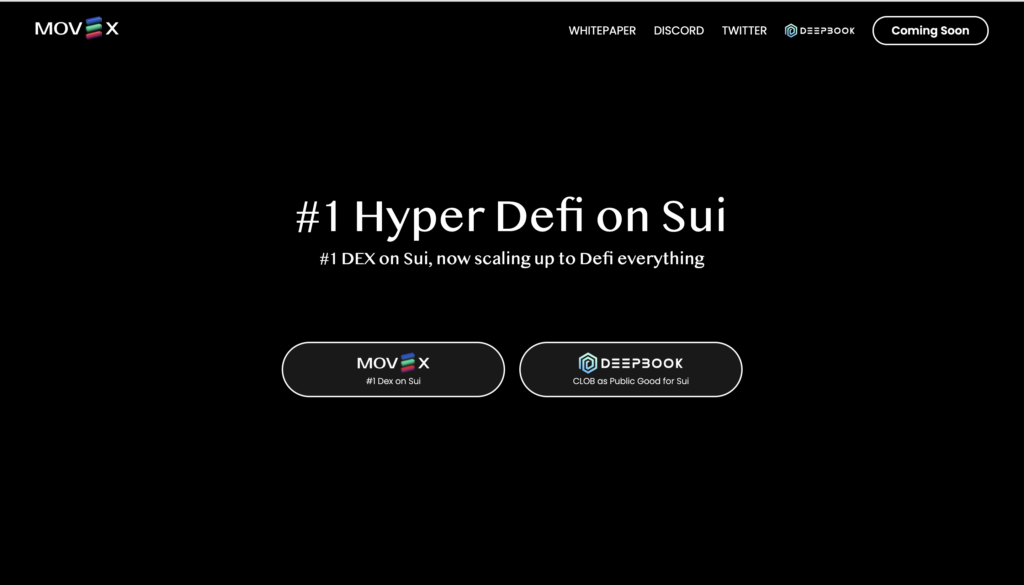
MovEX is the first decentralized exchange (DEX) on the Sui blockchain that combines the advantages of Automated Market Makers (AMM) and traditional order book models to provide a smooth trading experience creating a hybrid liquidity pool and enhancing the efficiency and effectiveness of asset swaps.
For more updates on MovEX, check out their Twitter page.
6. Sui Wallet: The Official Web3 Wallet for Sui Blockchain

Sui Wallet is the official web3 wallet for the Sui blockchain. This non-custodial web3 wallet, available as a browser extension, allows users to store, manage, and transact with SUI and other tokens and NFTs on the Sui network.
Sui Wallet is a user-friendly, secure, and efficient wallet solution designed for the Sui blockchain.
Other wallets for Sui include Suiet, an open-source wallet using zero trust architecture.
7. Abel Finance: A Cross-Chain Asset Lending Platform
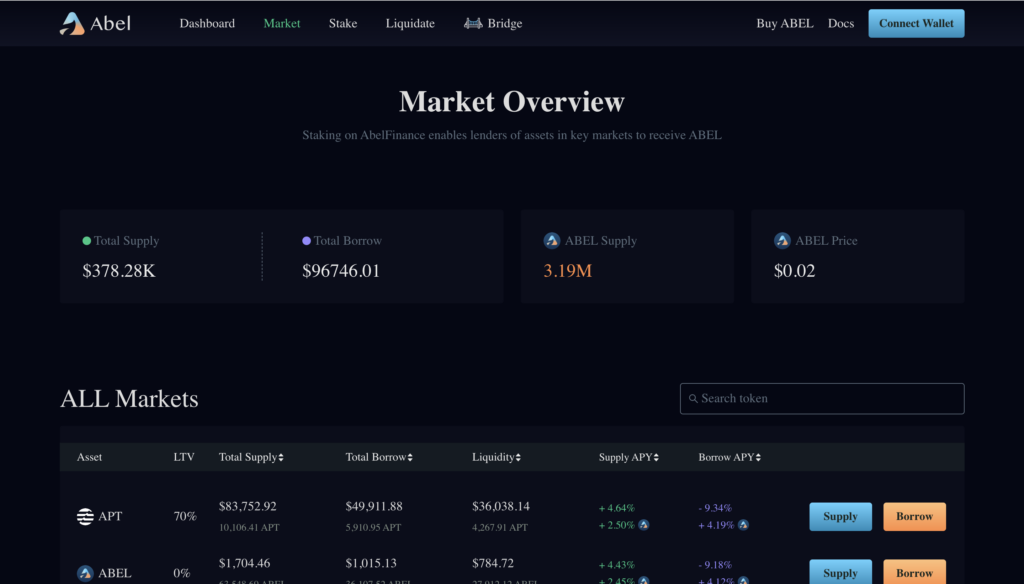
Abel Finance is a cross-chain asset lending platform designed to facilitate a wide array of lending and borrowing options in the DeFi sector.
In addition to conventional single-token lending and borrowing, Abel Finance takes a step further by allowing users to use LP Tokens and NFTs as collateral for stablecoin loans. This innovative approach broadens the possibilities for DeFi transactions and increases the utility of LP Tokens and NFTs within the ecosystem.
For more updates on Abel Finance, check out their Twitter page.
Sui Launchpad
8. SuiPad: The Community-Centric Launchpad on Sui Blockchain
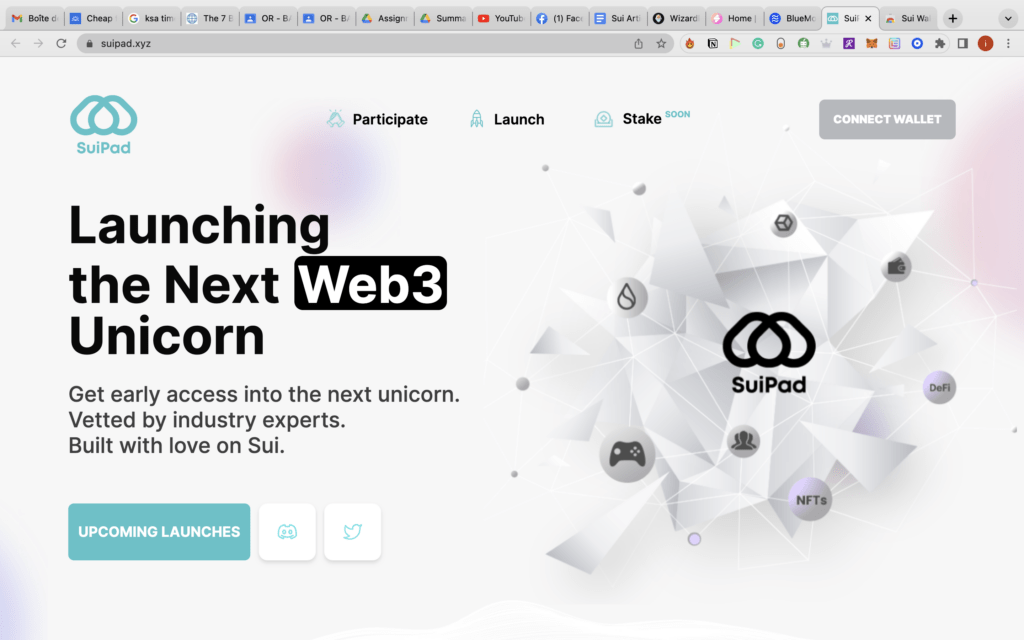
SuiPad emerges as a pioneering decentralized, community-driven launchpad on the Sui Blockchain. Developed in an official partnership with Mysten Labs, the creators of the Sui blockchain, SuiPad fosters promising crypto projects on the Sui network through Initial DEX Offerings (IDOs), providing a well-curated and bespoke token launch experience for projects and investors alike.
SuiPad’s platform allows users to participate in early-stage token sales of carefully vetted Tier-1 projects via its flagship product. This allows investors to be part of promising projects from their inception.
For more updates on SuiPad, check out their Twitter page.
NFT & Gaming Projects on Sui
9. BlueMove: The Leading marketplace in Sui
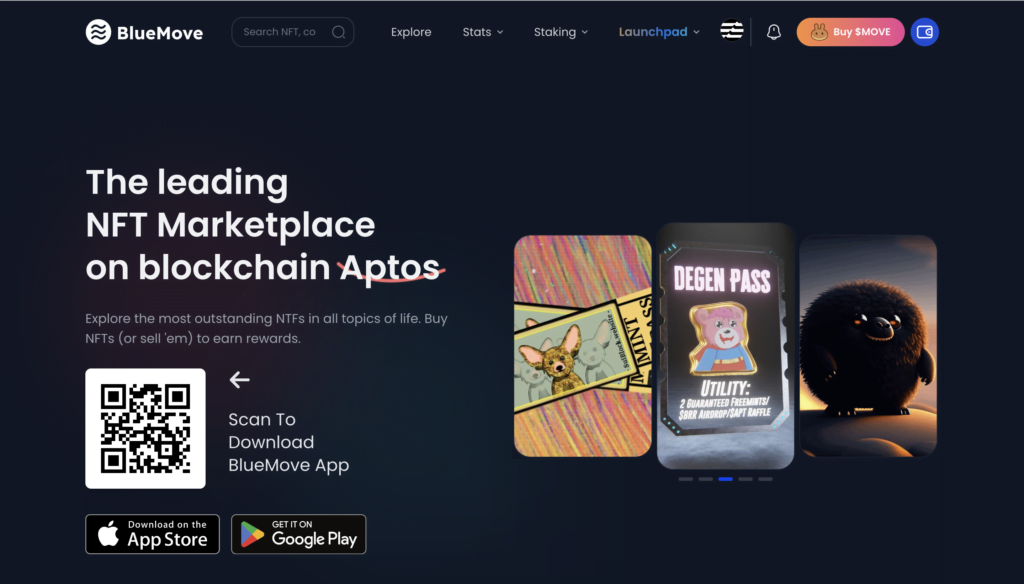
BlueMove is a thriving NFT marketplace operating on the Aptos and Sui blockchains, emphasizing strong community engagement and a rewarding system built around MOVE tokens. Users connect via a compatible wallet, such as Martian, to create a public profile and start trading. The platform provides insightful statistics on top traders and collections, and a search function allows users to find specific NFTs or users efficiently.
The marketplace boasts an engaging interface, offering filters for NFTs based on visual cues or price indicators. BlueMove supports auctions or fixed-price sales, with a 2% trading fee plus the author’s royalty. Additionally, it provides a launchpad for creators to showcase their NFT collections, further contributing to the dynamism and inclusivity of the platform.
For more updates on BlueMove, check out their Twitter page.
10. Souffl3: Revolutionizing NFTs and GameFi on Sui Mainnet
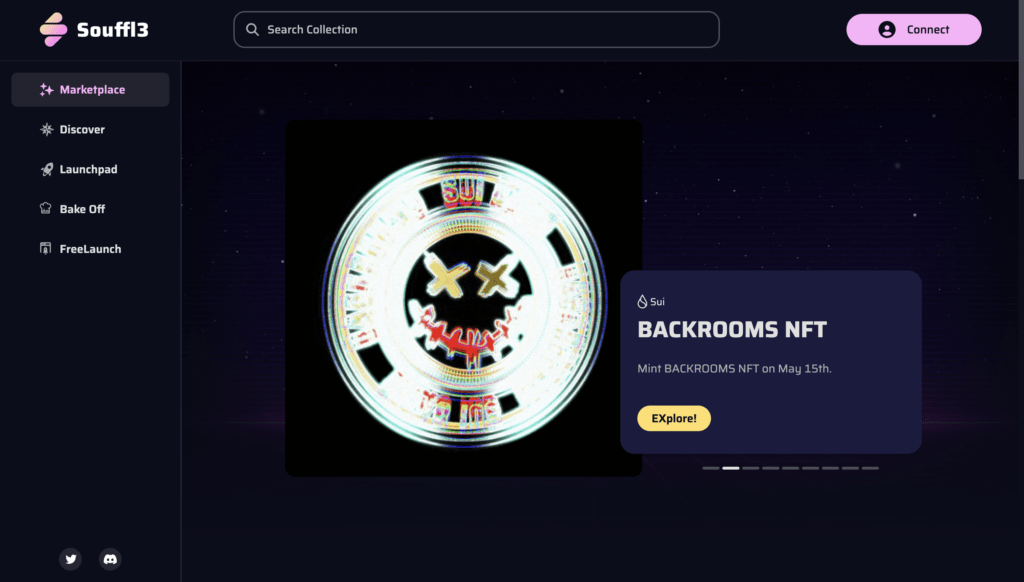
Souffl3 is expanding its NFT marketplace and GameFi offerings to the Sui blockchain, providing enhanced user experience, scalability, speed, and security. As part of this expansion, Souffl3 is also launching a streamlined NFT cross-chain solution, aptly named Whitelist Activation Voucher (WAV), which aims to bridge the gap between Sui and Aptos.
By leveraging Sui’s Layer 1 blockchain, Souffl3 aims to revolutionize the GameFi industry with its GameFi-as-a-Service (GaaS), providing developers with comprehensive tools to transform traditional gaming assets into NFTs. This strategic move is a testament to Souffl3’s commitment to continuously optimize its products and services to meet user demands and industry trends.
For more updates on Souffl3, check out their Twitter page.
11. Talofa Games
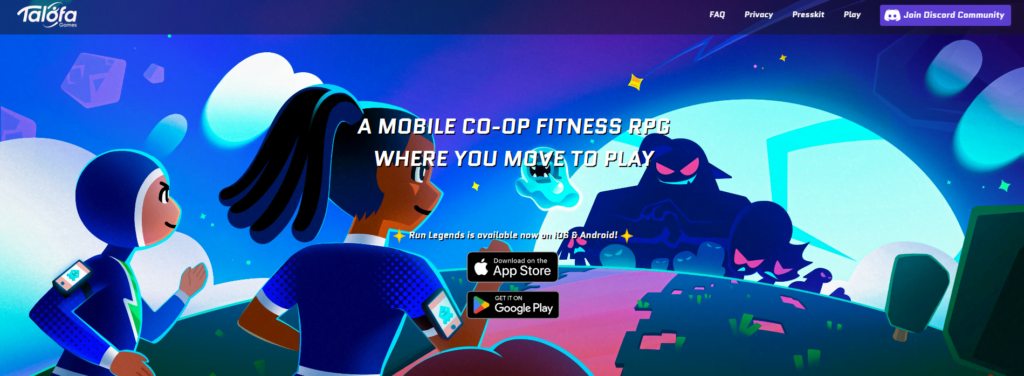
Talofa Games is at the forefront of the augmented reality gaming industry, pioneering a unique real-world social running game that effortlessly blends physical activity, social interaction, and competitive gameplay. Their platform merges live audio coaching with virtual running companions, transforming the way players engage with fitness.
Their innovative approach to gaming aims to motivate players towards healthier lifestyles by making exercise more interactive and enjoyable. By integrating competitive elements and social connections into the fitness journey, Talofa Games creates immersive experiences that go beyond traditional gaming. If you’re seeking a fun, engaging, and health-conscious way to game, Talofa Games offers an unparalleled platform for fitness and fun.
For more updates on Talofa, check out their Twitter page.
12. Wizardland: A Mystical Collection of Wizard PFPs
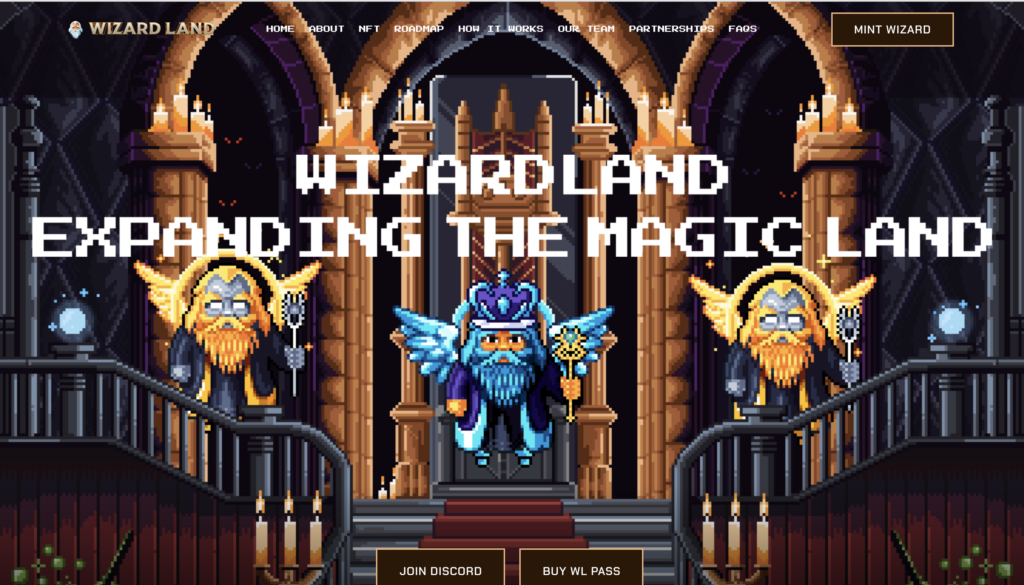
Wizardland is an enchanting collection of 2,222 wizard-based Profile Picture (PFP) NFTs launched on the Sui blockchain. MMORPG fantasy games inspire the project and seek to build a rewarding lore-based ecosystem for its holders and community.
Wizardland is more than just a collection of NFTs; it is an entire ecosystem based on lore. The project aims to tell a grand narrative through its wizard PFPs, fostering a sense of community and engagement among its holders.
For more updates on Wizardland, check out their Twitter page.
Infrastructure on Sui
13. Supra Oracle: A Leading Decentralized Oracle Network

Supra Oracle is a leading decentralized oracle network aiming to bridge the gap between traditional capital markets and the web3 industry. With unique security measures, cross-chain interoperability, and a swift transaction finality time, Supra allows Sui’s decentralized applications (dApps) to access real-world data on-chain efficiently.
Supra Oracle is built for seamless integration with various blockchains, enabling cross-chain interoperability and supporting Solidity/EVM-based and Move-based networks.
For more updates on Supra Oracle, check out their Twitter page.
14. Notifi: A new era for communication
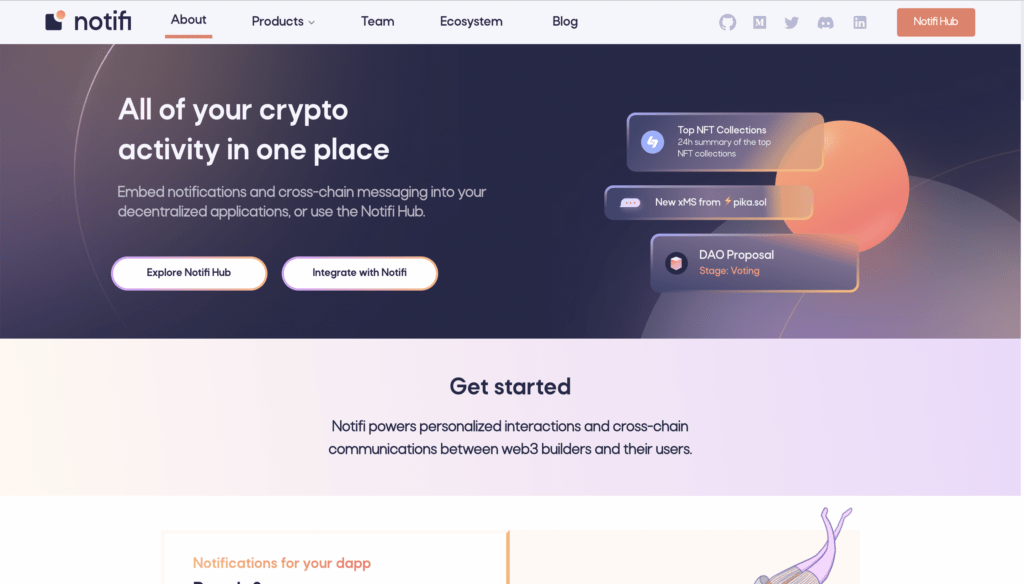
Notifi is an innovative Web3 protocol designed to revolutionize how projects communicate and interact on a global scale. It serves as a comprehensive communication backbone for Web3 developers, offering advanced features and a robust infrastructure to support projects of all sizes.
This protocol empowers personalized interactions between developers and users, facilitating seamless, engaging, and prioritized notifications. Notifi is simple to integrate, thanks to its user-friendly APIs, allowing developers to jumpstart their projects without the need to build from the ground up.
For more updates on Notifi, check out their Twitter page.
15. All That Node: A Comprehensive Network-as-a-Service Solution
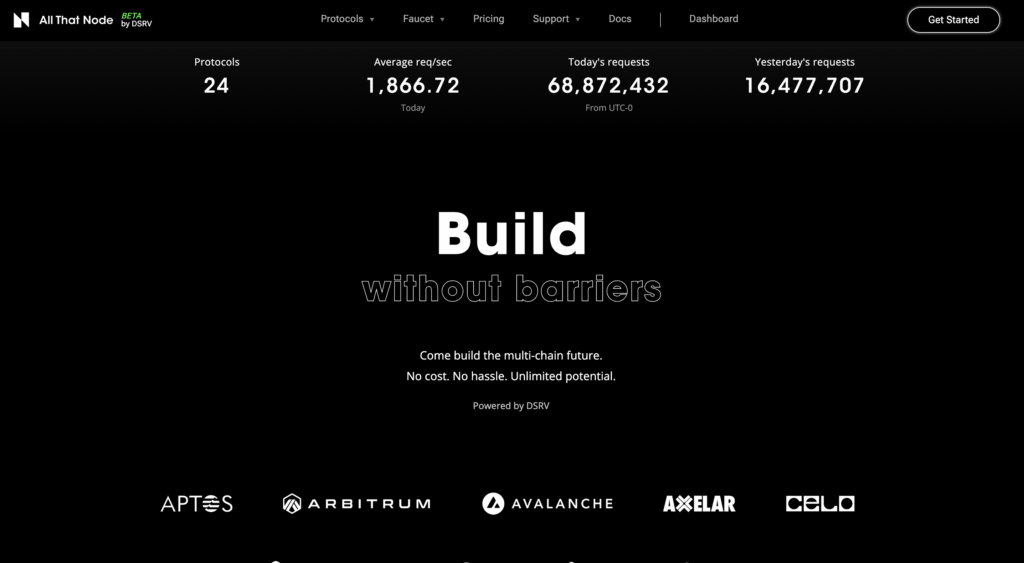
All That Node is a comprehensive Network-as-a-Service (NaaS) solution that provides both public and private Remote Procedure Call (RPC) nodes for over 25 carefully selected networks. It enables users to run a network of secure, multi-chain nodes across multiple leading blockchain protocols, enhancing the flexibility and reach of blockchain applications.
For more updates on All That Node, check out their Twitter page.
The dynamic Sui blockchain fosters a range of inventive projects, such as OmniBTC’s decentralized cross-chain swaps and Magic Egg’s NFT gaming experiences. These varied projects underline the vast potential of the Sui ecosystem. Each project listed embodies a unique solution to specific challenges or prospects in the blockchain domain. Despite their differences, they all aim to harness blockchain’s potential in fostering secure, streamlined, and inclusive digital economies.
To learn more about web3, check our articles.
Download our reports.
Watch our interviews.
